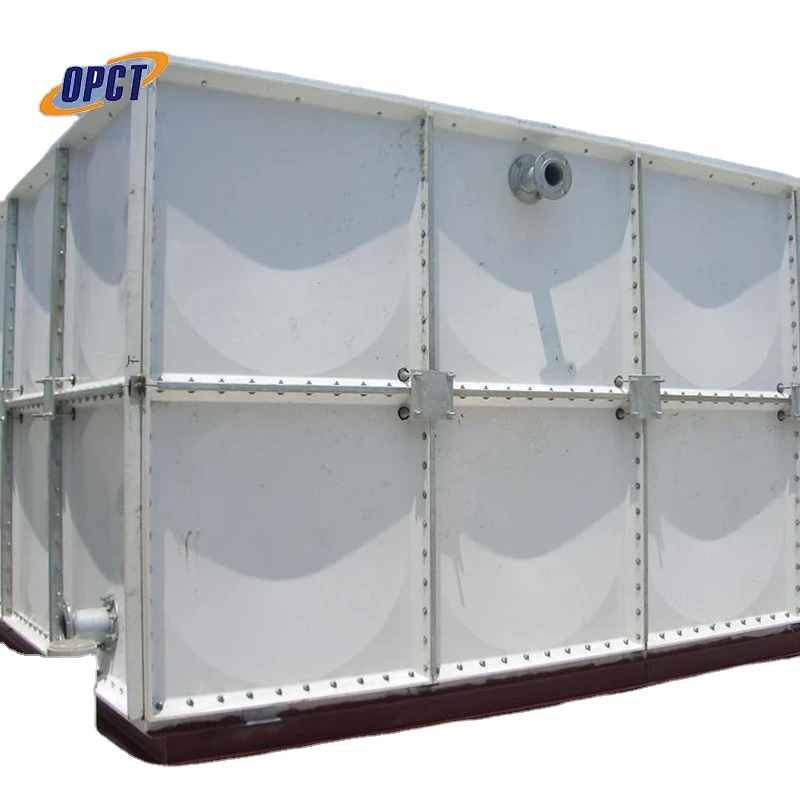Selecting the right water storage tank, especially when considering materials like steel, requires a keen understanding of several essential factors. Steel water storage tanks have been prominent in numerous industries due to their durability, cost-effectiveness, and ability to withstand harsh weather conditions. In this discussion, we explore their advantages, key considerations for selection, and maintenance tips to ensure longevity and performance.

The choice of a steel water storage tank brings about an array of benefits that make it an ideal solution for different storage needs. Its resilience against extreme weather is a leading advantage; steel does not easily crack or break under temperature fluctuations, a common issue with plastic alternatives. Additionally, steel tanks can withstand high pressures, which is particularly beneficial for large-scale storage.
Another key benefit of steel water storage tanks is their resistance to corrosion. While it's true that some metals are susceptible to rust, modern steel tanks are often manufactured with protective coatings or stainless steel, enhancing their ability to resist corrosion. This feature is of utmost importance for tanks used in environments with high humidity or exposure to the elements, as it ensures a longer service life and practically reduces maintenance costs.

From an environmental perspective, steel is a highly recyclable material. Choosing a steel tank contributes to sustainable practices, as these tanks can be repurposed or recycled into new products at the end of their lifecycle. This aspect aligns with companies aiming to adhere to eco-friendly standards and reduce their carbon footprint.
When selecting a steel water storage tank, it is crucial to consider the type of coating used. Coatings such as epoxy or polyurethane can significantly affect the tank's performance. These help protect the tank from internal and external chemical interactions, ensuring that the water quality remains uncontaminated and safe for use. Choosing the right coating is an important step towards maintaining the integrity of both the tank and its contents.
The installation site is another critical factor. Steel tanks are heavier than other materials and require stable, well-prepared ground. A solid foundation prevents potential settling or shifting that could compromise the tank's stability. Evaluating the site for easy accessibility to maintenance personnel also simplifies future upkeep and repairs.
water storage tank steel
Moreover, while steel tanks are generally low-maintenance, implementing a regular inspection routine can significantly increase their lifespan. Inspections should focus on checking the structural integrity of the tank, assessing for signs of wear or corrosion, and ensuring that all coatings are intact. Additionally, any auxiliary equipment, such as valves or connections, should be routinely tested to verify proper function.
In terms of storage capacity, steel tanks can be custom-built to meet specific requirements, whether for residential, agricultural, or industrial purposes. Understanding the correct size and volume needs can help avoid unnecessary expenditure and ensure efficient use of resources.
For businesses relying on water storage for production or emergency situations, it’s pertinent to understand the regulatory standards governing water storage infrastructure. Compliance with local and international safety standards not only assures the quality and safety of the water stored but also protects the organization from potential legal liabilities.
In order to achieve the best results from your steel water storage tank, partnering with reputable manufacturers who demonstrate strong expertise in tank production is advised. They can provide valuable insights and guidance on the best materials and configurations to meet specific storage needs.
In conclusion, steel water storage tanks present a robust solution for a wide array of needs and conditions. Their durability, eco-friendly characteristics, and adaptability in size and design offer distinct advantages over other materials. By considering factors such as coatings, site preparation, and regular maintenance, users can maximize their tank's efficiency and lifespan, ensuring a sound investment in their water storage needs.




